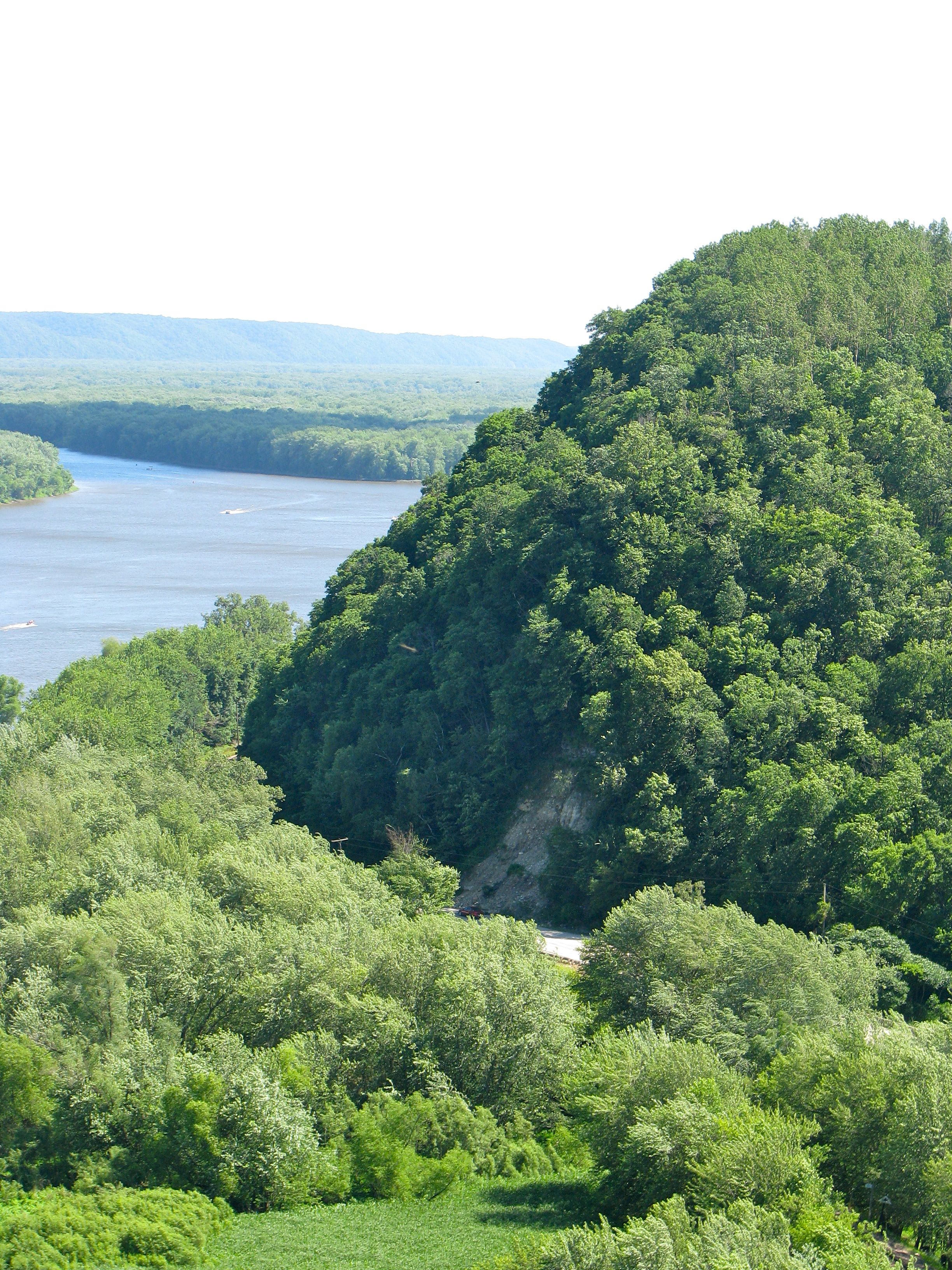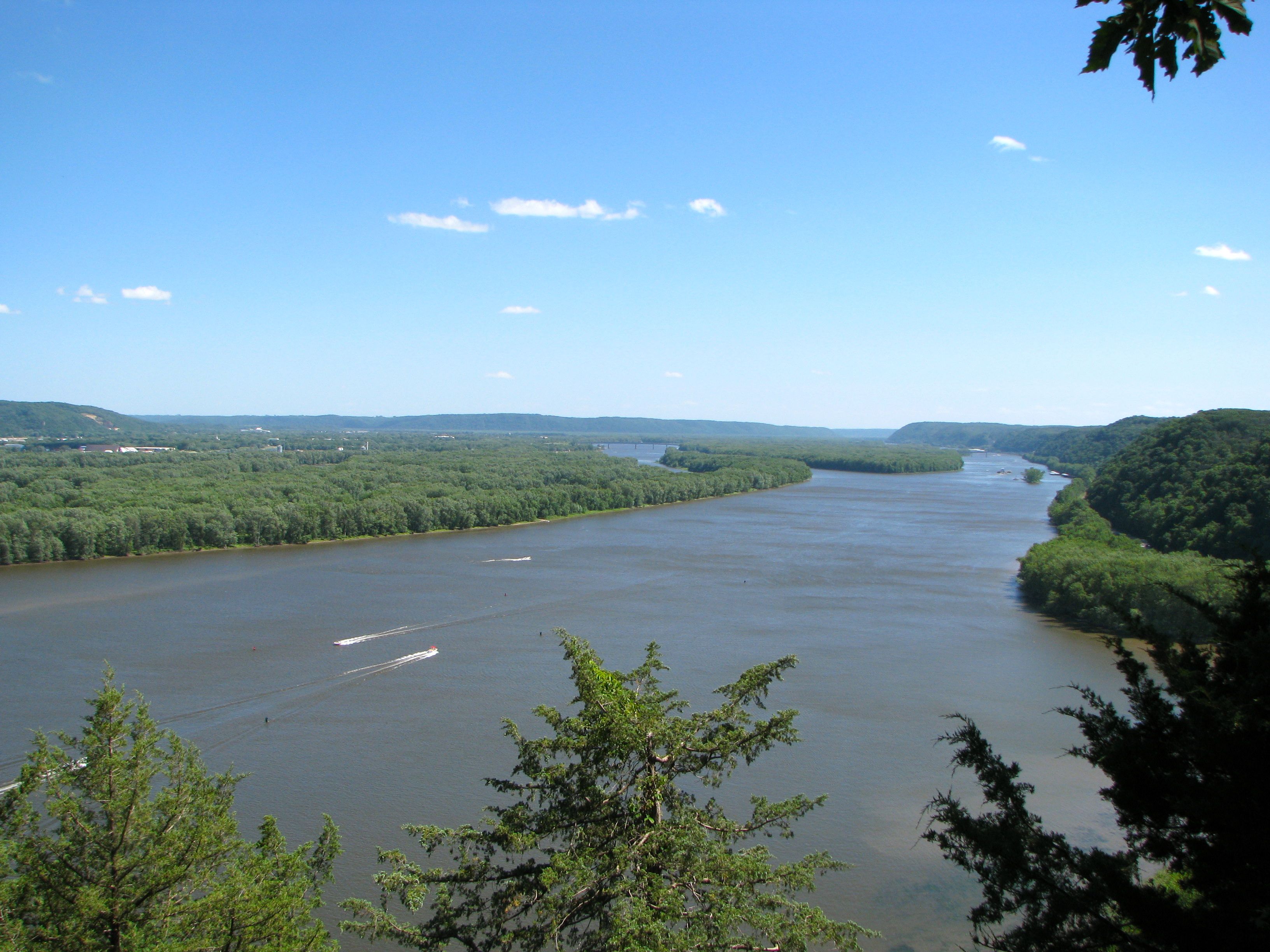Harpers Ferry, Iowa (June 2009)
Few people seem to know much about Effigy Mounds National Monument except for those who happen to live along these magnificent stretches of the Upper Mississippi River (map). It is practically unrivaled for its amazing combination of natural beauty and historical importance, with its scenic vistas above the river and its vast collection of mounds left behind by ancient Native Americans.
Effigy Mounds is found in Harpers Ferry, Iowa according to its postal address. That’s a bit of a misnomer. Actually it is closer and more easily accessible from the south, from the adjoining towns of Marquette and McGregor just a few miles down the road. Even Prairie du Chien, Wisconsin is likely a more convenient staging point, just down and across the river with abundant hotel accommodations.
We visited the North Unit, the more easily accessible section of the park. This is the location of the Visitor Center with its large parking lot. Trailheads for this entire portion of mounds and for the majority of the scenic vistas also emanate from here.
Geology

Who says that Iowa doesn’t have mountains? These majestic bluffs along the banks of the Mississippi River exist because of an unusual happenstance. It’s part of what is known as the “Driftless Area” which is generally associated with southwestern Wisconsin but also encompasses this little corner of Iowa. The name driftless has been applied because it escaped glacial drift during the last Ice Age.
A Glacier will scour the landscape and grind rock to dust under its massive weight. This area avoided glacial erosion as well as the resulting debris left behind as glaciers retreated. Instead, the area retains an older look with towering limestone bluffs so totally uncharacteristic of the mental image of Iowa. Effigy Mounds National Monument is the crown jewel of state and federal park lands that preserve Iowa’s driftless area along the Mississippi River. It remains in pristine condition just as the paleo-indians would have seen it when they built their mounds here before Europeans even knew the continent existed.
Vistas

Effigy Mounds National Monument is located conveniently along Iowa’s portion of the Great River Road. In fact, the road cuts directly through the park. The overlook from Eagle Rock provides long-distance views up and down the Mississippi River all the way to Prairie du Chien, several miles away on the Wisconsin bank. Hiking trails abound within the park, with plenty to choose from here in the Northern unit.
Fire Point (shown above) and Eagle Rock are the two most easily accessible overlooks. They do require a little hiking, the first half somewhat strenuous and the second half gently rolling, along a one mile trail up from the Visitors Center. For those who can manage the hike, the views unfold in a spectacular 180 degree arc high above the river. Tugboats pushing barges filled with crops and coal float by. Personal watercraft leave behind white chevrons along the water as they fly towards their destinations. People lounge on sandbars and transient riverbanks on the valley floor far below. Turkey vultures ride the thermals beside the valley walls.
Effigies

The real highlight of this National Monument is its eponymous mounds, the greatest concentration of such mounds found anywhere in the United States. Sixty seven of them can be seen in the North unit in various patterns: conical; linear; compound (two or more conical mounds connected by linear mounds); and effigy. The effigy mounds are distinctly different than the others and are formed in the shape of many different creatures including birds and bears. Paleo-indians constructed the initial mounds thousands of years ago. The effigy style began to appear around 1,400 years ago during the Late Woodland period and up until the era of European contact.
The walking trails provide close access to multitudes of standalone mounds and groups of mound. The Fire Point trail, for example, passes by the Little Bear Mound Group as well as compound mounds and a whole string of conical mounds moving towards the overlook. They are amazing in their size, placement and frequency. Privacy abounds. Take a look at your own pace.
These are sacred sites to the Native Americans who descend from the Woodland groups. Visitors can gain an immediate respect for these hallowed grounds as they pass along, appreciating the silence and contemplating the significance.

Leave a Reply